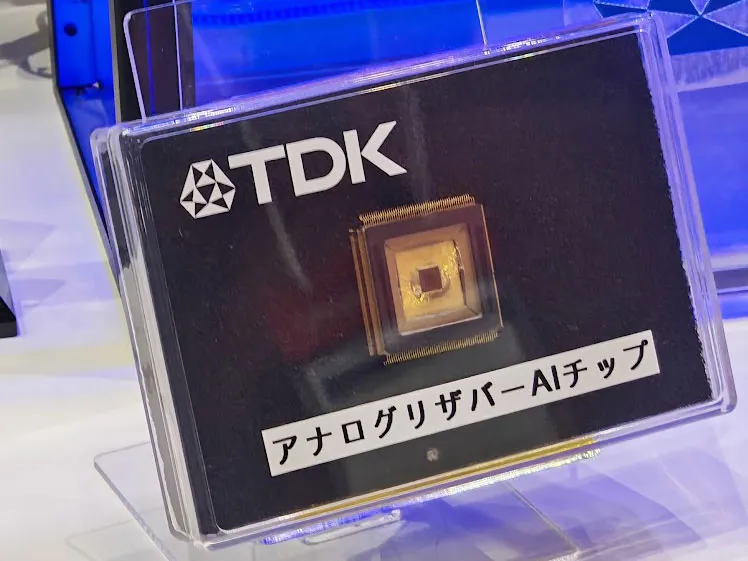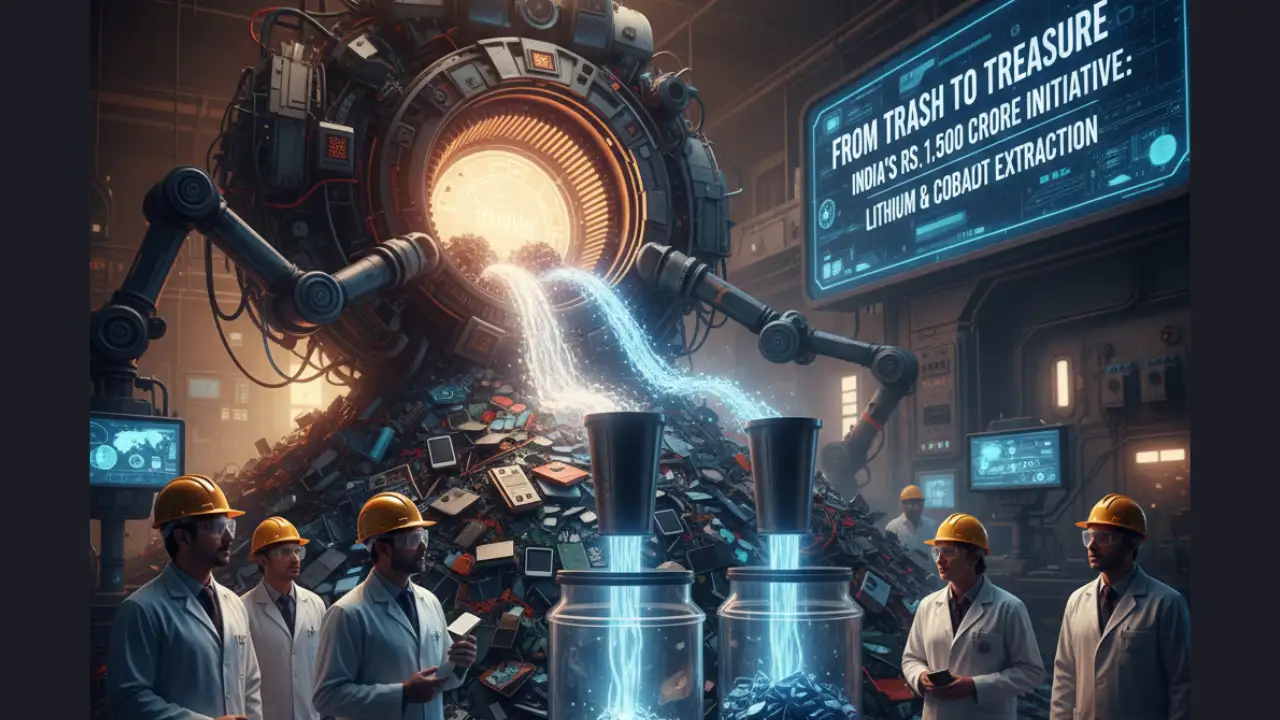Copyright Ubergizmo

At CEATEC 2025 in Japan, TDK Corporation presented a prototype that may impact how artificial intelligence learns and reacts in real time. The company’s new Analog Reservoir AI Chip, developed in collaboration with Hokkaido University, brings biological-style, low-power learning to compact hardware. Although still a research-stage device, the prototype vividly demonstrated its potential through an interactive experience — a rock-paper-scissors game you can never win. I tried the demo in person, with a TDK acceleration sensor strapped to my forearm and connected to the prototype chip. As I prepared to play, the system sensed my hand motion almost before I moved, predicting my choice with remarkable speed and accuracy. By the time I had made my gesture, the display had already shown its winning move. From Digital AI to Low Power Analog Intelligence, Most AI systems rely on digital computation, processing vast amounts of data through billions of binary operations on GPUs or dedicated accelerators. While powerful, these methods demand high energy and cloud resources, introducing latency and power constraints that make them less practical for compact edge devices such as wearables, sensors, or small robots. TDK’s analog approach is fundamentally different. The Analog Reservoir AI Chip performs computation through the natural dynamics of an analog electronic circuit rather than discrete digital logic. Inspired by the cerebellum, the brain region responsible for coordination and adaptation, the circuit can continuously learn from feedback — enabling real-time, on-device learning rather than relying solely on pre-trained models. The underlying concept, known as reservoir computing, uses a dynamic system — the “reservoir” — whose internal states evolve in response to input signals. The output is a simple function of those evolving states. Reservoir computing excels at processing time-series data, such as speech, motion, or sensor data, because it naturally captures temporal dynamics. By implementing this framework with analog circuits, TDK eliminates the heavy numerical computation typical of digital systems. Analog hardware can handle continuous signals, respond instantly, and operate with extremely low power consumption, making it ideal for real-time learning at the edge. Developed with Hokkaido University and Inspired by the Cerebellum The prototype was created jointly by TDK and Hokkaido University, whose researchers specialize in bio-inspired analog computing architectures. The resulting circuit mimics cerebellar learning and prediction, adjusting its internal parameters continuously to align with sensor inputs. The inspiration comes from the cerebellum, the “little brain” located at the base of the human brain. The cerebellum is responsible for coordination, timing, and motor learning, continuously fine-tuning movement in response to real-time feedback. It predicts the outcome of an action even before it is completed — for instance, adjusting the hand while catching a ball or balancing while walking. TDK’s analog reservoir AI chip reproduces this biological principle in electronic form: it learns and adapts continuously, using sensor feedback to refine its output almost instantly, just as the cerebellum does with the body’s movements. Although the prototype is not yet a commercial product, it demonstrates the feasibility of neuromorphic hardware — electronics that behave more like biological neurons than traditional processors. TDK envisions potential applications in robots, autonomous vehicles, and wearables, where adaptability, energy efficiency, and instant response are crucial. Recognition at CEATEC 2025 The Analog Reservoir AI Chip received a CEATEC 2025 Innovation Award (Japan Category), recognizing its groundbreaking contribution to real-time edge learning and low-power analog computing. The award highlights how TDK’s collaboration with Hokkaido University bridges advanced material science and neuromorphic circuit design to create a practical, energy-efficient AI technology. This distinction underscores the prototype’s potential to transform edge intelligence, where adaptive learning must happen instantly, close to the sensors. The Rock-Paper-Scissors Demo: AI That Learns You In Real-Time At CEATEC 2025, TDK showcased an engaging demo using its analog reservoir AI chip and acceleration sensors. The setup featured a display showing the game, a lightweight sensor on the participant’s arm, and the prototype chip processing motion data in real time.As I began to move my fingers to form rock, paper, or scissors, the system measured my finger acceleration and trajectory. The analog circuit instantly processed the data stream and predicted my intended gesture, displaying its countermove before I could finish. The sensation was uncanny — as if the system had read my mind — yet it was purely responding to motion patterns faster than any human reaction time. The chip also adapted to my personal motion style. Everyone forms gestures differently, and when I intentionally changed the way I made “scissors,” the system learned the variation on the spot. Within seconds, it was again anticipating my movements correctly. This demonstration highlighted the chip’s core strengths: Real-time adaptive learning directly from live sensor input No cloud connection during operation Ultra-low latency and minimal energy use Hybrid Model: Cloud Calibration and Real-Time Learning on the Edge Although the Analog Reservoir AI Chip performs learning and inference locally, it is part of a hybrid AI architecture. According to TDK, large-scale data processing and optimization occur in the cloud, while individual, real-time learning happens on the edge. In practice, the chip’s initial design and calibration were developed using digital simulation tools, likely in either a cloud or a laboratory environment. Researchers pre-defined the circuit topology, feedback strengths, and stability parameters. Once fabricated and running, however, the chip adapts autonomously to live data without external computation. This hybrid model offers the best of both worlds: the cloud provides global optimization and system-level intelligence, while the edge — powered by analog learning — ensures instant response and low energy consumption. Why Analog Reservoir Computing Matters In AI design, balancing power efficiency, latency, and learning capability remains a challenge. Most current edge AI systems run pre-trained models locally, allowing quick inference but no continuous learning. Updating these models requires retraining in the cloud, consuming energy and bandwidth. TDK’s analog reservoir chip changes that paradigm. Because its analog circuits perform on-device, online learning, they can adapt instantly to new situations — learning from motion, vibration, or biosignals without any cloud retraining. This has broad implications for next-generation devices: Wearables could learn a user’s movement or health patterns in real time. Robots could adjust autonomously to changing environments. Vehicles could continuously refine control responses, improving safety and efficiency. Reservoir computing aligns perfectly with TDK’s extensive sensor portfolio, which already handles time-series data across motion, pressure, temperature, and other domains. Integrating analog AI directly into these sensors could create self-learning components that enhance both performance and sustainability. The Broader Vision: AI in Everything, Better TDK’s CEATEC 2025 exhibit centered on the theme of contributing to an “AI Ecosystem” — a world where intelligence is embedded everywhere, from the cloud down to the smallest sensor. The Analog Reservoir AI Chip represents the edge layer of this ecosystem, complementing large cloud models rather than replacing them. By combining cloud-based mass data processing with individual, adaptive learning at the edge, TDK aims to reduce latency, energy consumption, and data transmission. This vision aligns with its corporate identity, “In Everything, Better,” reflecting a commitment to embedding smarter, more efficient intelligence into every product category. A Glimpse of What Comes Next While still a prototype, the Analog Reservoir AI Chip shown at CEATEC 2025 provided a clear demonstration of how real-time, low-power learning can take place directly at the edge. The experience proved that adaptive AI does not require large-scale cloud infrastructure — it can run locally, within an efficient analog circuit. On the feature sheet displayed at TDK’s booth (visible in one of our photos), the company listed gesture and voice recognition, anomaly detection, and robotics as potential applications. The same sheet highlighted the chip’s core features: a neural network for time-series data modeling, real-time learning, and low-power, low-latency operation. The rock-paper-scissors demo may have been playful, but it showed in a simple way that hardware capable of learning in real time is no longer a concept — it is already working. Find more information on TDK’s Analog Reservoir AI Chip product page.



